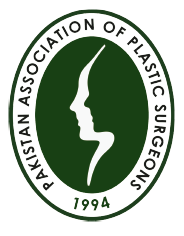ULNAR NERVE ENTRAPMENT
Ulnar nerve travels close to the inner side of the elbow to the hand. It’s the same nerve which gives us sharp electric pain when we “hit the funny bone” . Its main functions are to carry sensation of the little and ring finger to the brain ,supply muscles of the forearm for the finger and wrist movements and fine function of the hand like threading the needle.
Ulnar nerve injury or entrapment can cause dull pain, cold sensitivity, numbness and tingling in fourth and fifth fingers, reduce power of fingers and wrist and also abnormal claw-like posture of hand due to paralysis of small muscles in hand.
Ulnar nerve is mostly entrapped near the elbow (cubital tunnel syndrome) and near the wrist (Guyon’s canal) . It’s quite common in office workers and people often use laptops while their hand rests on the edge of table or chair, or by holding the handle during prolonged or regular bike riding. Pregnancy is also commonly associated with nerve entrapments.
A detail history and physical examination is generally required for the diagnosis of nerve entrapment, but your doctor may also order tests like electromyography (EMG) and nerve conduction study (NCS), which basically test the function of ulnar nerve and also muscles supplied by the nerve.
There are nonsurgical ways to relieve symptoms of nerve entrapment by using pain killers and splints but you should always consult your doctor first as splints can also aggravate the entrapment.
Surgical options include releasing the ulnar nerve at wrist / elbow or both. Ulnar nerve release at the wrist is a day care procedure which includes giving anesthesia either locally on the area being operated on or anesthesia for complete unconsciousness. There will be a small cut near the palm and wrist which will be later on closed using a few stitches .Hand will be dressed and a splint will be applied for a few days. After 10 to 12 days all the stitches will be removed and resuming of all activities will be allowed after 2 weeks.
Releasing the ulnar nerve near the elbow requires a much larger incision hence it will be done under general anesthesia, and a day of hospitalization is required, if required your doctor might change the position of nerve to a much more comfortable position in order to prevent future compressions. A comfortable dressing and splint is applied for a few weeks. All sutures will be removed in 12 to 14 days and activities will be resumed in 2 to 4 weeks.
After nerve release, return of sensation and function of muscles took from few weeks to a year depends on severity of initial presentation, the more early the release the better will be the outcome.
FAQs
1. It’s been 5 days since my Guyon’s canal surgery but I didn’t feel any return of sensations?
It took about 6 to 12 weeks for some symptoms to recover, but full recovery is expected to take upto a year. Recovery depends on severity of symptoms on initial presentations and is there is continuous numbness in fingers for some time before surgery, it is expected that recovery will take about one year.
2. Is Full recovery possible?
Generally complete recovery is possible in mild to moderate cases, some deficit is expected in very severe cases or cases with prolonged illness
3. my hand is experiencing currents like sensations in my finger after surgery, is this normal?
Yes, it’s normal . nerve recovery can present with current like sensations. Your surgeon can prescribe some medication which can reduce these sensations without affecting nerve recovery.
4. Why is my hand shrinking?
Your hand is not shrinking because of muscles losing their volume Because they are not supplied by nerves. Some recovery is possible after the surgery.. Cosmetic improvement of hand is also possible
Written by : Dr. Obaidur Rahman
Copyrights: Pakistan association of Plastic Surgeons

